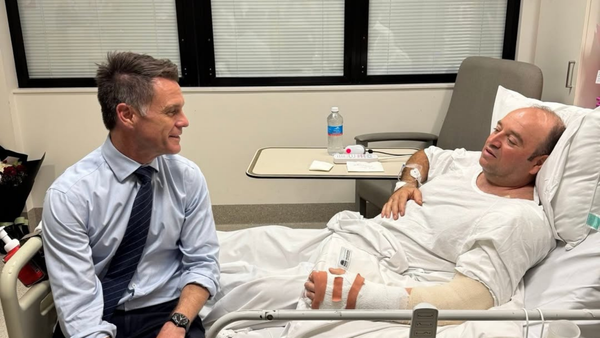If you want an escape from the unrelenting coverage of Donald Trump or the Lionesses, then perhaps you should dabble in some of those soothing lifestyle concepts that a lot of folk coo over these days.
You’re possibly aware, for instance, of hygge, which is the Danish art of cosiness and conviviality and involves such simple pleasures as a drink, some company and a fire.
Think of auld Cammy and Norrie necking back 12 cans, blethering about the fitba and dozing off as the chip pan goes ablaze and you get the general idea.
If hygge doesn’t float your boat, then there’s always niksen, which is the Dutch notion of doing absolutely nothing.
Or you could try fika, which is the Swedish art of the coffee break. It’s actually the favoured concept of the sports editor who regularly pores over this column with a chipped mug of Nescafe Gold Blend and mutters, “what the fika is he writing about now?”. Or something like that.
So, what are we going to write about this week? Well, let’s have a meander along with the amateur-to-professional transition.
Lottie Woad seems to have mastered it. Her victory in the ISPS Handa Women’s Scottish Open on Sunday in her first start as a professional was a quite tremendous effort.
Forget hygge, niksen or fika. Perhaps ‘Lottie’ could become a type of buzzword for self-help in golf?
While Woad marched to glory at Dundonald Links, a programme aimed at boosting various layers of women’s golf here in Scotland was launched.
As part of the initiative, some funding to help smooth the path between the amateur game and the professional scene was unveiled.
We all know that birling here, there and everywhere as a touring golfer can lead to the kind of eye-watering expenses sheet that would make Auric Goldfinger choke on his bullion.
In the women’s game, with fewer playing opportunities, smaller prize pots but just as much outlay, the figures often don’t add up.
That earlier 007 reference is quite apt. Financial assistance to the leading Scottish players is being provided by the Sean Connery Foundation. Not quite Licence to Kill, more licence to help with some of the bills.
Hannah Darling, who made her pro debut at Dundonald, and Lorna McClymont, who is in her rookie year on the Ladies European Tour, are the first recipients of this funding with more, hopefully, to benefit in the next few years.
This amateur-to-pro lark, both in the male and female game in Scotland, has caused much head scratching and teeth gnashing down the seasons.
Scores of talented amateur golfers were tipped for great things but, upon turning pro with little financial backing or a hand to guide them, struggled to keep their heads above water and disappeared into obscurity.
A number of years ago, Iain Stoddart, the effervescent head of the Bounce management firm which has nurtured Robert MacIntyre’s career, pieced together a meaty document broadly equivalent to the Beveridge Report as he mapped out a plan to bolster the health of the country’s rookie pros.
The tome was called ‘Fusion Scotland’ and it essentially called for the various stakeholders involved with Scottish golf to work together for a wider cause.
In a such a fragmented scene as Scotland, with different bodies all protecting their pockets of power and influence, it was a complex exercise in gentle shepherding that was akin to a vast sheepdog trial.
Stoddart and his team identified the problem areas and, over time, did a grand job in helping a new generation find their feet and prosper.
The hope now is that a fresh wave of women golfers can benefit from the Connery Foundation’s support.
Finding our next Catriona Matthew was never going to be easy. We were spoiled by her trailblazing triumphs and wonderful longevity even though, in a wider sporting sense, her achievements were often woefully under appreciated.
You could probably say that about UK women’s golf in general. The exploits of the aforementioned Woad have certainly attracted plenty of attention. It probably helps that she, dare I say it, is English.
But as various female pursuits garner unprecedented levels of coverage, golf, by and large, still muddles on in the margins and seems to have missed the tail wind that’s been gusting behind other women’s sports.
At a club level here in Scotland, meanwhile, the push on the female front goes on. The top brass at Scottish Golf, the amateur game’s governing body, have set a target of increasing the number of female members at domestic clubs by 15 per cent come 2027.
In an evolving and increasingly challenging landscape, that’s a fairly ambitious target. Compared to the rest of Europe, Scotland’s female membership rates have always been embarrassingly low.
Historical shackles haven’t helped. For years, many clubs in the game’s cradle treated women with hostility. Ignoring half the population was never going to be a solid platform for future development, was it?
In recent years, though, concerted and admirable efforts have been made to make golf more appealing to the good ladies of all ages and all backgrounds. There’s still a lot of catching up to do, though.
As long as young girls are coming into the game at the grassroots, then there’s always hope of some green shoots and a healthier future at all levels, from the club scene through to the professional stage.
Now, if you don’t mind, I’m off to immerse myself in some hygge. Where’s that bloomin’ chip pan?







